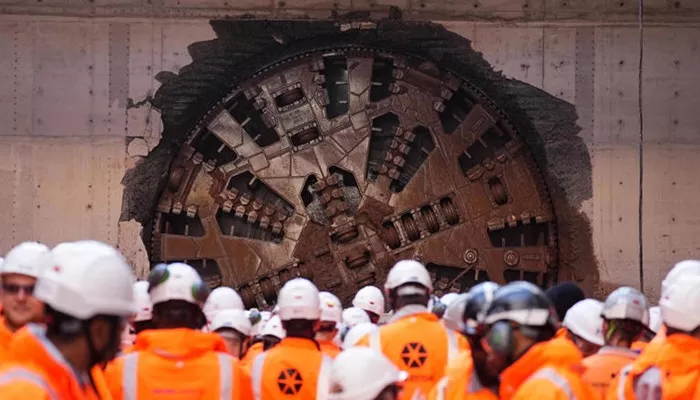Houston, as the fourth largest city in the United States, is often threatened by disasters such as hurricanes and floods. The deployment of generators is a core link to ensure the operation of key facilities. This article will combine technical specifications, historical cases and practical operation experience to explore the key time nodes, influencing factors and optimization strategies of generator deployment after disasters, providing a professional perspective for power emergency management.
The time frame and key stages of generator deployment
The deployment of generators after a disaster is usually divided into three stages:
Phase 1 (0-24 hours after disaster) : Rapid assessment and prioritization
The electrician team needs to cooperate with the emergency management department to determine the extent of power grid damage through methods such as drones and on-site investigations, and prioritize the deployment of mobile generators for key facilities such as hospitals, fire stations, and communication base stations. For instance, during the winter storm “Uri” in 2021, Houston delivered large diesel generators to 15 hospitals within 12 hours after the disaster.
Phase 2 (24-72 hours after the disaster) : Expand coverage and resource allocation
At this point, it is necessary to coordinate with suppliers, transportation companies and power companies to deploy medium-sized generators to secondary priority facilities such as community shelters and water supply pumping stations. At this stage, challenges such as insufficient fuel supply and road disruptions are often faced.
Phase 3 (72 hours later) : Long-term backup and transition to power grid restoration
During the gradual repair of the power grid, portable generators need to be configured for residential and commercial areas, and the power supply pressure should be alleviated through temporary power stations. For instance, after Hurricane Harvey in 2017, some communities in Houston relied on generators for power supply for as long as three weeks.
Core factors affecting deployment time
Types of Disasters and Extent of Damage
Hurricane/Flood: Due to water accumulation, the substation was paralyzed. Waterproof generators need to be deployed first, but transportation is restricted by road conditions. For instance, after Hurricane Harvey, the deployment of generators in the low-lying areas east of Houston was delayed until 48 hours after the disaster.
Winter storm: Extremely cold weather causes fuel (diesel, propane) to condense, requiring additional heating devices, which extends the deployment time by 20% to 30%.
Resource Reserves and Supply Chain Efficiency
Inventory capacity: The Houston municipal government requires that critical facilities (such as hospitals) must stock at least 72 hours’ worth of generator fuel, but small institutions often rely on external supplies.
Supplier response: Data from 2020 shows that the average response time of local generator rental companies in Houston was 6 hours, but during large-scale disasters, it may be extended to more than 24 hours due to a surge in demand.
Technical Operations and Personnel Allocation
Electrician skills requirements: Deploying large generators requires professional knowledge such as parallel operation and load balancing. Insufficient personnel training may lead to installation delays.
Safety regulations: According to the National Electrical Code (NEC) of the United States, temporary generators must be at least 3 meters away from buildings and equipped with grounding protection. The compliant deployment in complex terrains takes longer.
Historical case analysis and timeline comparison
Case 1: Winter Storm “Uri” in 2021
Timeline: Activate the emergency plan 4 hours after the disaster, deploy the first batch of generators to the hospital within 12 hours, and cover 50% of the shelters within 72 hours.
Bottleneck: The disruption of the fuel supply chain has led to 30% of the generators shutting down due to fuel shortage, and the deployment in some areas has been delayed until the fifth day.
Case 2: Hurricane Harvey in 2017
Timeline: Deployment began 8 hours after the disaster, but due to the flood inundated the main roads, the eastern communities did not receive the generators until the third day.
Experience summary: Houston has since set up overhead generator storage sites in coastal areas, reducing the deployment time by 40%.
Technical and management strategies for optimizing deployment efficiency
Technical Improvements
Modular generator set: It adopts a containerized design, integrating fuel and control systems, reducing on-site installation time (which can be shortened to 2 hours).
Intelligent monitoring system: It uses IoT sensors to monitor the generator load and fuel balance in real time and issue early warnings of faults.
Management Optimization
Pre-contracted supplier network: Sign priority supply agreements with cross-state generator companies to ensure the priority of resource allocation during disasters.
Community collaboration program: Train residents to use household generators and achieve neighborhood power sharing through the “microgrid” model to alleviate the pressure of centralized deployment.
Policy Recommendations
Mandatory reserve standard: Legislation requires large commercial buildings to be equipped with fixed backup generators (such as New York State Local Law 26).
Cross-departmental drills: Every six months, organize joint drills involving the power grid company, the fire department, and the Electrician association to optimize the deployment process.
Practical operation suggestions from an electrician’s perspective
Pre-disaster preparedness: Regularly inspect the battery, fuel filter and automatic transfer switch (ATS) of the customer’s backup generator.
On-site operation: Use an infrared thermal imager to quickly diagnose the risk of circuit overload and prevent the generator from being damaged due to short circuit.
Public education: Popularize generator safety knowledge in the community (such as carbon monoxide emission distance, prohibition of indoor use, etc.) to reduce human-caused accidents.
Conclusion
The deployment time of generators after disasters directly determines the emergency response effectiveness of Houston, and its efficiency is affected by multiple factors such as resource reserves, technical capabilities and management collaboration. The professional level needs to be enhanced from three aspects: pre-disaster maintenance, rapid response and technological innovation. In the future, by promoting modular equipment, strengthening supply chain resilience and improving the policy framework, Houston is expected to reduce the deployment time of generators to within six hours after a disaster, setting a benchmark for urban disaster prevention systems.

